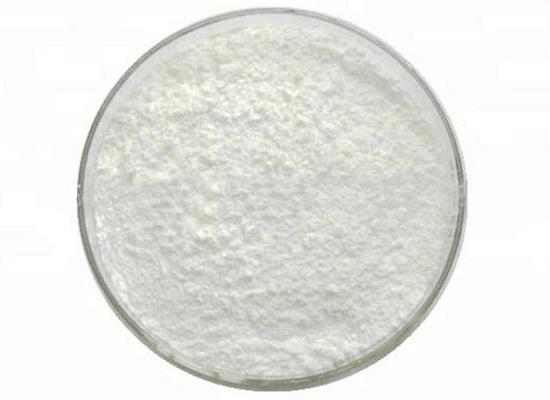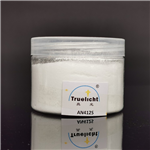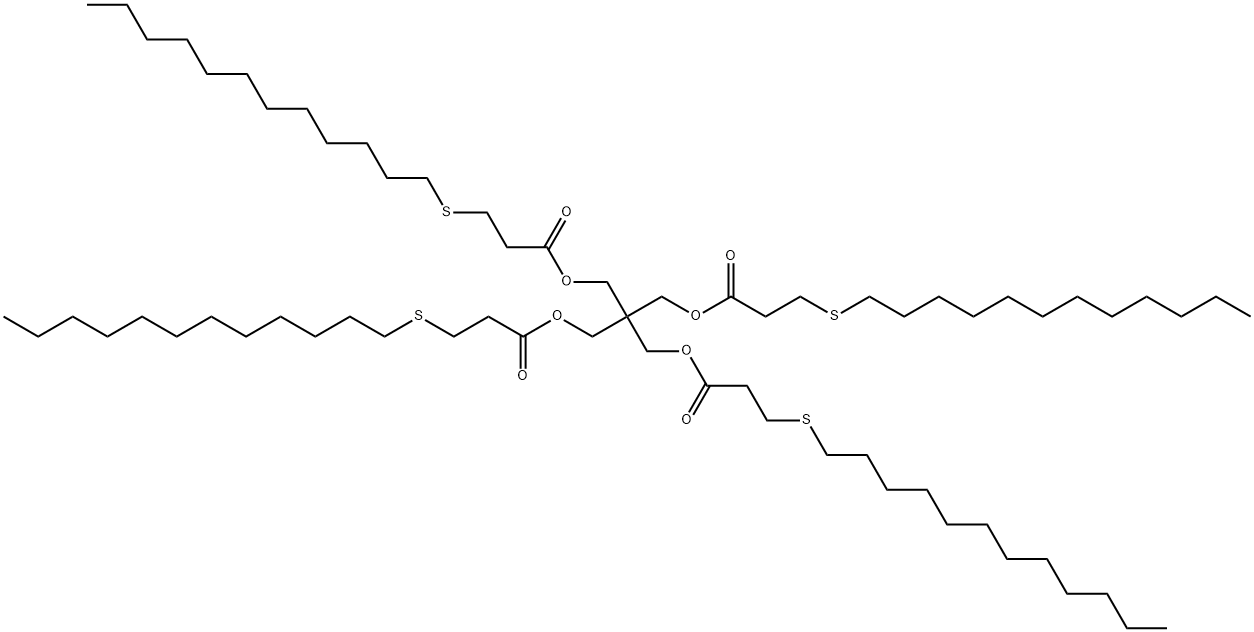Antioxidant 412S: properties, applications and safety
Nov 28,2023
General Description
Antioxidant 412S is a white solid powder with a high melting point and low solubility in water. It is commonly used as a non-symmetrical hindered phenolic antioxidant in the processing and stabilization of styrene polymers, PVC, polypropylene, and high-density polyethylene. When combined with auxiliary antioxidants and light stabilizers, it exhibits excellent resistance to oxidation-induced discoloration and provides long-term thermal stability to the polymer materials. Antioxidant 412S has been extensively studied for its safety and is considered non-carcinogenic and non-toxic within acceptable limits. Regulatory bodies have established guidelines and maximum concentrations for its use in food products. Overall, Antioxidant 412S plays a crucial role in protecting polymer materials and enhancing their quality and durability.

Figure 1. Antioxidant 412S
Properties
Antioxidant 412S is a white solid powder with a melting point above 46℃. It is soluble in heptane and cyclohexane, but virtually insoluble in water. As a highly efficient non-symmetrical hindered phenolic antioxidant, Antioxidant 412S exhibits high antioxidant efficiency, low volatility, and excellent resistance to oxidation-induced discoloration. When used in conjunction with auxiliary antioxidants such as thioesters and phosphite esters, it demonstrates a remarkable synergistic effect. Additionally, when combined with light stabilizers, it imparts excellent weather resistance to the final products. This antioxidant is primarily utilized in the processing and long-term thermal stabilization of styrene polymers like HIPS, ABS, MBS, as well as POM, PA, PUR, PVC, and thermoplastic polyesters. In PVC polymerization processes, Antioxidant 412S can serve as an effective chain terminator without adversely affecting the polymerization reaction. It can be added directly to the monomers of polystyrene and PVC, offering reliable long-term thermal stability. Overall, Antioxidant 412S plays a crucial role in protecting the aforementioned polymer materials from oxidative degradation, ensuring their quality and performance over extended periods of use. 1
Applications
Antioxidant 412S is a highly effective sulfur ester assistant antioxidant with specific applications in the field of polymer production. This particular antioxidant is characterized by its low volatility and high molecular weight, making it especially well-suited for use with polypropylene (PP) and high-density polyethylene (HDPE). In practical applications, Antioxidant 412S is often utilized in combination with phenolic antioxidants to enhance anti-aging properties, improve light stability, and enhance the initial color and luster of the polymers. By working synergistically with phenolic antioxidants, Antioxidant 412S contributes to the overall quality and longevity of the polymer products. The use of Antioxidant 412S is particularly beneficial in the plastic industry, where it plays a crucial role in maintaining the stability and appearance of materials. Its ability to enhance the performance of PP and HDPE makes it a valuable additive in polymer production processes. Overall, Antioxidant 412S demonstrates significant potential for improving the properties of polymers and ensuring their long-term durability. 2
Safety
Antioxidant 412S is a widely used additive with a well-established safety profile. This antioxidant is commonly utilized to prevent lipid oxidation in various food products, thereby extending their shelf life and maintaining quality. Numerous scientific studies and regulatory assessments have consistently demonstrated the safety of Antioxidant 412S for consumption. Firstly, extensive toxicological studies have been conducted to evaluate the potential adverse effects of Antioxidant 412S on human health. These studies have consistently shown that this compound is non-carcinogenic and does not pose significant acute or chronic toxicity risks when consumed within acceptable limits. Furthermore, regulatory bodies such as the FDA and EFSA have established specific guidelines and maximum allowable concentrations for Antioxidant 412S in food products to ensure its safe use. These regulations are based on comprehensive safety evaluations and continuous monitoring of any potential health concerns associated with its consumption. In summary, the safety of Antioxidant 412S has been well-documented through scientific research and regulatory oversight, confirming its suitability for use as a food additive. 3
Reference
1. PubChem. COMPOUND SUMMARY: 2,2-Bis[[3-(dodecylthio)-1-oxopropoxy]methyl]propane-1,3-diyl bis[3-(dodecylthio)propionate]. National Library of Medicine, PubChem CID: 122423.
2. Propanoic acid, 3-(dodecylthio)-, 1,1'-[2,2-bis[[3-(dodecylthio)-1-oxopropoxy]methyl]-1,3-propanediyl] ester. EPA Chemicals under the TSCA.
3. 2,2-bis[[3-(dodecylthio)-1-oxopropoxy]methyl]propane-1,3-diyl bis[3-(dodecylthio)propionate]. European Chemicals Agency, EC / List no. 249-720-9.
- Related articles
- Related Qustion
- Antioxidant RIANOX 412S - Specification, Application, Safety etc. Dec 9, 2021
Antioxidant RIANOX 412S is a high performance thioether antioxidant for the stabilization of polyolefins, styrenic polymers, and engineering plastics. Usually Antioxidant 412s is used with phenolic antioxidants.
Supplementation with pyridoxal 5'-phosphate monohydrate can synthesize neurotransmitters such as dopamine and serotonin, maintaining a healthy nervous system.....
Nov 4,2025Biochemical EngineeringCassiaside C, a natural compound from Cassia obtusifolia, shows potential as an antioxidant and anti-inflammatory agent for various applications.....
Nov 28,2023APIAntioxidant 412S
29598-76-3You may like
Antioxidant 412S manufacturers
- Pentaerythritol Tetra(3-Dodecylthiopropionate)
-

- $0.00 / 20kg
- 2025-11-04
- CAS:29598-76-3
- Min. Order: 20kg
- Purity: 98.0%
- Supply Ability: 1600 Tons
- ANTIOXIDANT TRUELICHT AN412S
-

- $0.00 / 1KG
- 2025-10-13
- CAS:29598-76-3
- Min. Order: 1drums
- Purity: 98.0%
- Supply Ability: 20 tons
- 2,2-Bis[[3-(dodecylthio)-1-oxopropoxy]methyl]propane-1,3-diyl bis[3-(dodecylthio)propionate]
-
![29598-76-3 2,2-Bis[[3-(dodecylthio)-1-oxopropoxy]methyl]propane-1,3-diyl bis[3-(dodecylthio)propionate]](/ProductImageEN1/2025-06/Small/bba0ab33-84e5-46a2-8dce-63ea357a37a7.png)
- $8.80 / 1kg
- 2025-10-13
- CAS:29598-76-3
- Min. Order: 1kg
- Purity: 99%
- Supply Ability: 100kg






